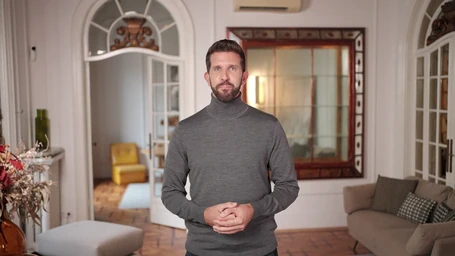5 Engaging Toastmaster Speech 5 Ideas to Keep Your Audience Captivated
Searching for that perfect speech topic can feel like a daunting task. Believe me, I understand the struggle of trying to grab and maintain an audience’s attention. Through countless trial and error, along with dedicated research, I’ve uncovered several techniques that can transform any Toastmaster speech into an engaging adventure for your listeners.
In this blog, I’ll share five tested ideas guaranteed to make your next presentation stand out. So buckle up — inspiration is just around the corner!
Key Takeaways
- Talking about common experiences grabs people’s attention because everyone can relate to them.
- Using humor and personal stories makes speeches more enjoyable and memorable.
- Mastering body language, like avoiding distracting movements, helps keep the audience focused on you.
- Recording yourself practicing your speech allows you to see where you need improvement.
- Organizing your speech with a clear structure keeps your audience engaged from beginning to end.
Tips for Choosing a Topic for Your Toastmaster Speech
– Choose relatable experiences for your speech
– Incorporate humor to engage your audience
Focus on common and relatable experiences
Talking about things we all go through can really grab people’s attention. I find that when I share stories or examples from everyday life, everyone in the room perks up. It’s like flipping a switch that lights up their interest.
This approach has helped me overcome my own fear of public speaking by connecting with my audience on a basic human level.
If it’s human, it’s universal, and if it’s universal, it connects.
In my journey with Toastmasters International, I learned the power of using common experiences to make speeches more relatable. Simply mentioning something as simple as struggling to wake up in the morning or dealing with traffic can get nods and smiles around the room.
These moments create a bridge between me and my listeners, proving time and again that shared experiences are powerful tools for engaging an audience.
Incorporate humor into your speech
Incorporating humor into your speech can make it more engaging and enjoyable for the audience. A well-timed joke or a funny story can lighten the mood and help people connect with your message.
I always use personal anecdotes and lighthearted observations to bring a smile to my listeners’ faces. Remember, humor should be used tastefully and relevantly to your topic, helping you connect with your audience on a human level.
Now let’s move on to the next amazing tip: “The Importance of Body Language in Speech Delivery.”
Share unique or personal stories
When incorporating humor into your speech, consider sharing unique or personal stories that your audience can relate to. Personal anecdotes can captivate your audience and make your speech more engaging.
For example, I once shared a funny mishap from when I was preparing for an important presentation, and it immediately connected me with my audience. Using personal stories not only adds authenticity but also helps in making a lasting impression on the listeners.
This technique ensures that they will remember your message long after you’ve finished speaking.
The Importance of Body Language in Speech Delivery
Mastering body language is crucial in speech delivery. Eliminate distracting movements to enhance your presentation’s impact. Utilize video recording for self-evaluation and improvement.
Removing “noisy” movements
When delivering a speech, it’s crucial to eliminate distracting movements that can take away from your message and impact your audience’s engagement. Here’s how to do it:
- Find a comfortable stance on stage, keeping your feet shoulder-width apart and weight evenly distributed.
- Control unnecessary hand gestures by using purposeful movements that emphasize key points in your speech.
- Avoid pacing back and forth, as it can be distracting and convey nervousness to the audience.
- Limit fidgeting with objects or adjusting clothing, as it can divert attention from your words.
- Practice maintaining good posture to exude confidence and professionalism.
By removing “noisy” movements, you’ll enhance your presence on stage and ensure that your audience stays focused on the substance of your speech.
Avoiding forced gestures
When delivering a speech, avoid forced hand gestures to maintain authenticity and connection with your audience. Here are some key tips to keep in mind:
- Use natural gestures that complement your words and emotions.
- Keep your gestures open and relaxed, avoiding stiff or robotic movements.
- Practice mirroring the size of your gestures to the size of the room and audience.
- Ensure that your gestures flow naturally with the rhythm of your speech.
- Avoid overused or repetitive hand movements that may distract from your message.
Maintaining authentic body language is crucial for engaging your audience throughout your speech.
Moving on to “Utilizing video recording for self-evaluation”…
Utilizing video recording for self-evaluation
When it comes to improving my speech delivery, I utilize video recording for self-evaluation. By watching myself speak, I can identify areas where I need improvement and work on my body language and vocal variety.
It helps me remove any distracting habits and gestures, ensuring that my message is effectively communicated to the audience. Furthermore, I leverage video recording to capture my progress over time, allowing me to track improvements in my speaking skills.
Examples of Engaging Toastmaster Speeches
Witness powerful speeches like “The Joy, The Ecstacy, The Moment by Anonymous,” and “Home Invasion by Annie.” Discover captivating stories that will keep your audience engaged. Read more to explore the world of engaging Toastmaster speeches.
The Joy, The Ecstacy, The Moment by Anonymous
One of the engaging Toastmaster speeches that caught my attention is “The Joy, The Ecstacy, The Moment” by Anonymous. This speech weaves relatable experiences and captivating personal stories to keep the audience engrossed.
By incorporating humor and sharing unique moments, it successfully captures the essence of storytelling to keep listeners captivated throughout. Additionally, through enthusiastic delivery, this speech effectively demonstrates how body language can significantly impact audience engagement.
Now let’s explore the next aspect of keeping your audience captivated – Home Invasion by Annie.
Home Invasion by Annie
Moving on from “The Joy, The Ecstacy, The Moment by Anonymous” to “Home Invasion by Annie,” I’d like to share about Annie’s captivating speech. In her presentation, Annie skillfully used captivating storytelling to engage the audience and make her speech more interesting.
She clearly showed how incorporating personal stories can truly captivate listeners and hold their attention. Furthermore, Annie effectively demonstrated the use of humor in her speech which not only entertained the audience but also kept them interested throughout.
Through these techniques, she illustrated that with engaging storytelling and a touch of humor, one can effectively captivate an audience and deliver a memorable Toastmaster speech.
Stuck in a Rut by Jason Turner
“Stuck in a Rut by Jason Turner” is an engaging Toastmaster speech that explores the feeling of being stuck and unmotivated. Turner uses personal anecdotes to connect with the audience, making his speech relatable.
He demonstrates how to use storytelling effectively to captivate listeners while sharing valuable insights on overcoming obstacles. His speech showcases the power of genuine storytelling in captivating an audience, providing a great example for public speaking beginners.
Moving on to “Death by PowerPoint by Don McMillan“…
Death by PowerPoint by Don McMillan
In Don McMillan’s “Death by PowerPoint,” he hilariously shows how to avoid boring slide presentations. He uses humor and silly examples to explain the dos and don’ts of using PowerPoint.
His tips include not putting too much text on a slide, avoiding bullet points, and being careful with fonts and colors. Don explains the importance of keeping slides simple and using engaging visuals as well as adding humor in your presentation to keep your audience interested.
This helps public speaking beginners learn how to use PowerPoint effectively for their speeches while keeping their audience captivated.
Strategies for Keeping Your Audience Captivated
– Use captivating storytelling to engage your audience.
– Implement effective communication and presentation techniques.
The use of captivating storytelling
Captivating storytelling is a powerful tool to keep your audience engaged. Sharing personal stories or experiences can create an emotional connection with your audience, making your speech more relatable and memorable.
Using vivid descriptions and sensory details can help transport your listeners into the world of your story, capturing their attention and imagination. By incorporating captivating storytelling into your speeches, you can leave a lasting impact on your audience while effectively getting your message across.
Utilizing captivating storytelling is essential in public speaking as it helps to maintain the interest of the audience throughout the speech. This technique allows speakers to connect with their audience on a deeper level by creating an immersive experience through engaging narratives.
The importance of effective communication
Effective communication is crucial for connecting with your audience and getting your message across clearly. It involves not just speaking, but also listening actively to understand others.
I have found that focusing on the needs of your listeners and conveying information in a clear, engaging manner can keep them captivated. By using compelling visuals, captivating storytelling, and incorporating humor into your speech, you can ensure that your audience remains interested and connected throughout your presentation.
Additionally, maintaining high energy levels and utilizing body language effectively are key elements in keeping the attention of your audience during public speaking engagements.
Tips for organizing and structuring your speech
When organizing and structuring your speech, consider the needs of your audience and what keeps them engaged. Here are essential strategies to keep in mind:
- Begin with a strong opening that grabs the audience’s attention and clearly states the purpose of your speech.
- Create a clear and logical structure for your speech, including an introduction, body, and conclusion.
- Use signposts or transitions to guide the audience through different sections of your speech.
- Incorporate a central theme or main message that ties everything together.
- Use storytelling techniques to make your points memorable and relatable.
- Break down complex ideas into manageable segments to ensure understanding.
- End with a powerful closing that reinforces key points and leaves a lasting impression.
By following these guidelines, you can organize and structure your speech effectively, keeping your audience captivated from start to finish.
Utilizing presentation techniques
When delivering a speech, incorporate captivating visuals to keep the audience engaged. Use compelling images and thought-provoking questions to pique their interest. Utilize PowerPoint effectively to build anticipation and enhance your message impact.
Incorporate humor into your speech by using relevant jokes or light-hearted anecdotes. This will help maintain the audience’s attention and make your presentation more enjoyable. Engage the audience by offering a mix of engaging storytelling and interactive elements in your speech delivery, ensuring that you strike a balance between information-sharing and active participation throughout.
Remember: Keep it relevant, interesting, simple, and entertaining!
Incorporating audience engagement and participation
When crafting your speech, consider using captivating storytelling and effective communication to keep your audience engaged. Organize and structure your speech with presentation techniques that encourage audience participation.
Utilize compelling visual images, provocative questions, and remarkable facts to capture their attention. Incorporate a hook at the beginning and maintain simplicity throughout to pique curiosity.
Ultimately, keeping the audience engaged requires enthusiasm, high energy, and relevance. These elements are pivotal in ensuring that your listeners remain captivated throughout your entire presentation.
Conclusion
As I reflect on my journey from a nervous speaker to someone who now guides others in public speaking, the path was not easy. My own experiences and the lessons I’ve learned have shown me that engaging an audience goes beyond just standing up and reciting words.
It involves connecting with people on a deeper level.
Choosing the right topic, using body language effectively, telling stories that resonate, incorporating humor, and keeping everything organized are key elements that can make any Toastmaster speech captivating.
These strategies are not just theories; they are practical steps grounded in real-life public speaking challenges.
From my time with Toastmasters International, watching countless speeches and delivering many of my own, it’s clear to me these tips do keep audiences captivated. Using them has transformed how I approach speechwriting and delivery – making each presentation an opportunity for connection rather than just another talk.
I hope sharing these insights inspires you to step out of your comfort zone as I did. With practice and patience, anyone can become a great speaker who captures their audience’s attention from start to finish.







